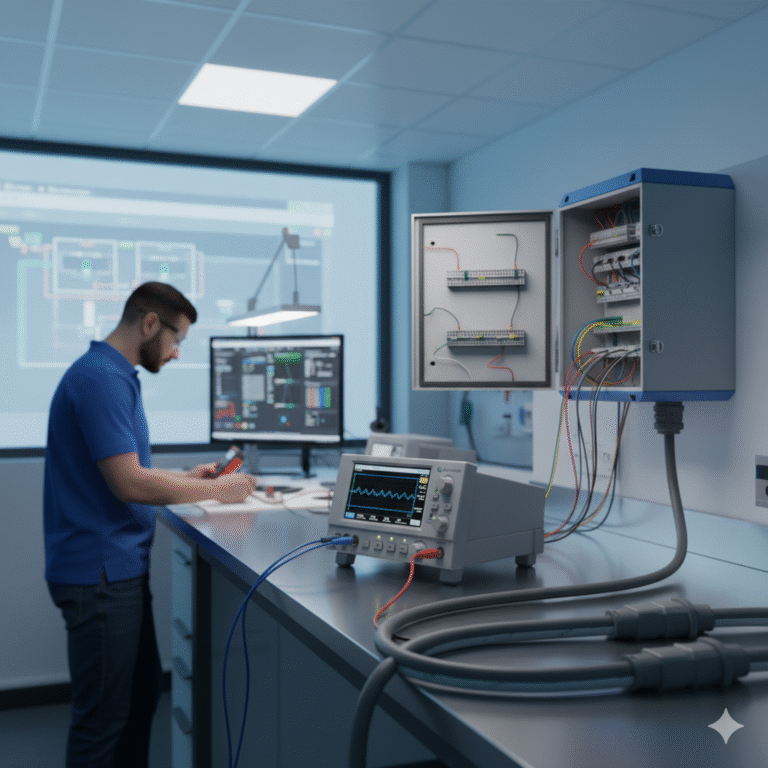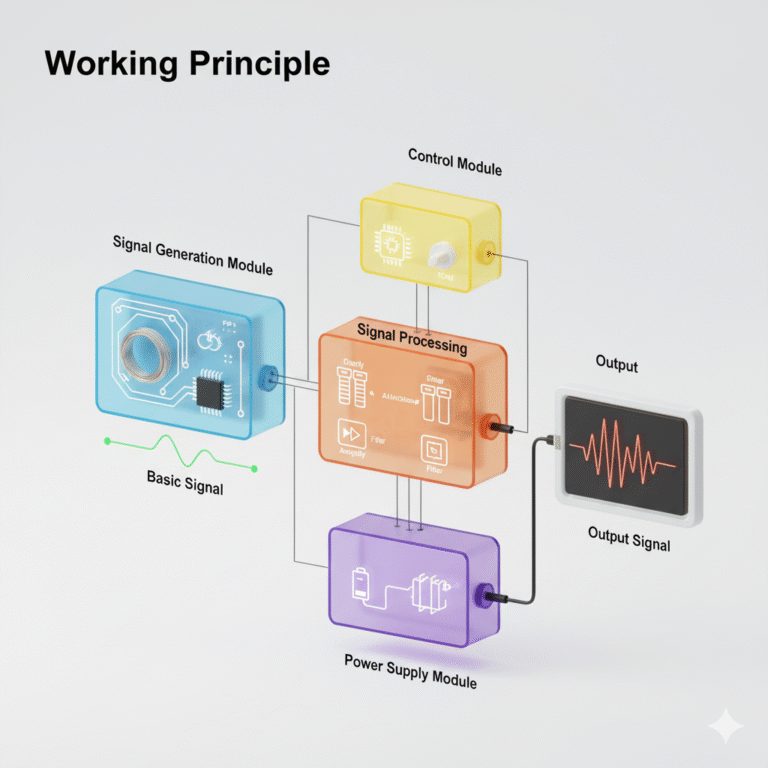A signal generator is a device used to provide various electrical signal excitations for electronic devices or systems. It can output signals such as voltage, current, resistance, and thermocouple, among others. These generators are widely used in fields like electronics engineering, industrial automation, and scientific research. Below is a detailed introduction:
1. Key Features
1.1 Multi-Signal Output Capability
Voltage Signal Output: Signal generators can produce voltage signals with various waveforms such as sine waves, square waves, and triangular waves. The voltage amplitude, frequency, and phase can be precisely controlled. Output voltage ranges from millivolt to kilovolt levels, accommodating different device and circuit requirements. For example, they can provide input excitation for electronic amplifiers or calibration signals for oscilloscopes.
Current Signal Output: These generators can output stable DC current or AC current signals with specific frequencies. Current output typically ranges from milliamps to amps and can be adjusted according to the application. It is commonly used for driving devices that require current excitation, such as motors and sensors, and for testing the characteristics of current-based loads.
Resistance Signal Output: Signal generators can simulate resistance values within a specified range through internal circuitry and algorithms. This functionality is useful for simulating resistive components in circuits, allowing for testing and analysis under varying resistance conditions, such as simulating load resistance during circuit debugging.
Thermocouple Signal Output: Primarily used to simulate signals from temperature sensors such as thermocouples or RTDs (resistance temperature detectors). These generators can output voltage or resistance signals corresponding to specific temperature values with high accuracy and stability. They are used in temperature measurement and control system calibration and debugging.
1.2 High Precision and Stability
To ensure the accuracy and reliability of the output signal, signal generators use high-precision components and advanced circuit technologies during design and manufacturing. This ensures that the output signal remains stable under various environmental conditions, with minimal error, and the parameters like voltage and frequency stay consistent.
1.3 Flexible Control and Adjustment Methods
Signal generators are typically equipped with multiple control interfaces. They can be manually controlled through local buttons, knobs, and screens, or remotely controlled and configured via serial, network, or USB ports. Some high-end models also support programmable control, allowing users to automate operations through code, making them adaptable to various application scenarios.

2. Working Principle
The internal structure of a signal generator typically consists of a signal generation module, signal processing module, control module, and power supply module.
Signal Generation Module: This is the core part of the signal generator. It generates basic signals based on different principles. For example, an oscillator generates sine wave signals, while digital signal processing (DSP) or Field-Programmable Gate Arrays (FPGA) generate more complex digital signals.
Signal Processing Module: This module amplifies, filters, modulates, and converts the basic signals to meet the user’s requirements. For instance, it can convert voltage signals to current signals or simulate specific resistance values.
Control Module: The control module receives input commands from the user and adjusts the parameters of both the signal generation and processing modules to ensure the accuracy and stability of the output signals.
Power Supply Module: The power supply module provides stable power for the entire signal generator, ensuring its smooth operation.

3. Application Areas
3.1 Electronic Circuit Design and Testing
In the design, development, and debugging of electronic circuits, signal generators provide various excitation signals to verify the functionality and performance of the circuits. For example, when designing audio amplifiers, signal generators can output sine waves with different frequencies and amplitudes as inputs to test the frequency response and distortion of the amplifier.
3.2 Industrial Automation Control Systems
In industrial automation production lines, signal generators simulate signals from various sensors and actuators to test and debug control systems. For example, they can simulate thermocouple signals for temperature control systems or output current signals to drive motors, helping to check the response speed and accuracy of the control systems.
3.3 Scientific Research and Experimentation
In research fields such as physics, chemistry, and biology, signal generators serve as vital instruments to provide various electrical signal excitations. For instance, in the study of material electrical properties, a signal generator can output different frequency and amplitude voltage signals to examine the conductive and dielectric properties of materials under alternating electric fields. In biomedical experiments, it can simulate bioelectric signals to study the electrophysiological properties of cells.
3.4 Communication Systems
In the development, production, and testing of communication equipment, signal generators are used to produce various communication signals, including analog modulation signals (AM, FM, PM) and digital modulation signals (QAM, PSK, etc.). These signals are used to test and calibrate communication receivers, transmitters, and other devices. They can evaluate parameters such as receiver sensitivity, selectivity, transmitter power, and frequency stability.
